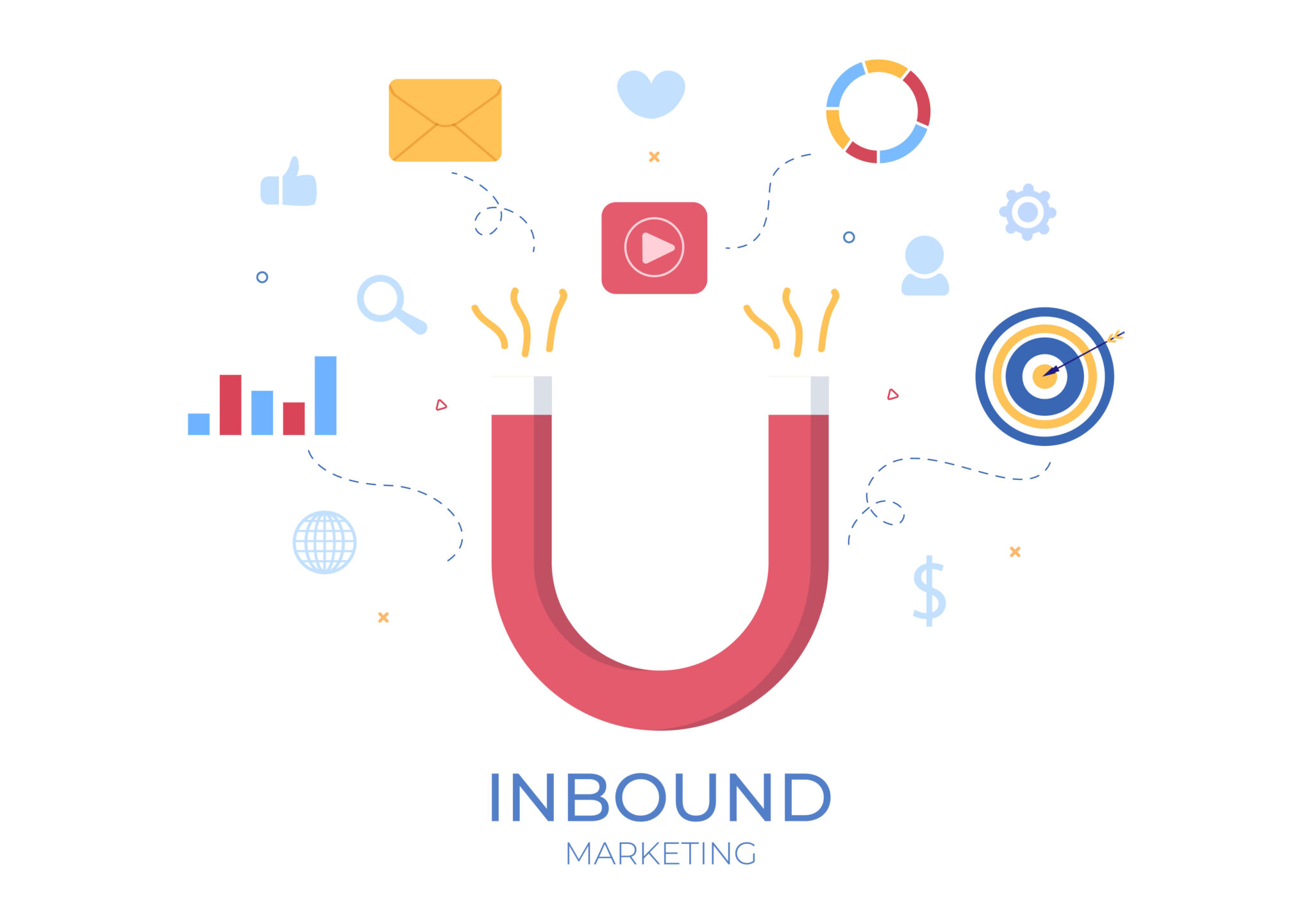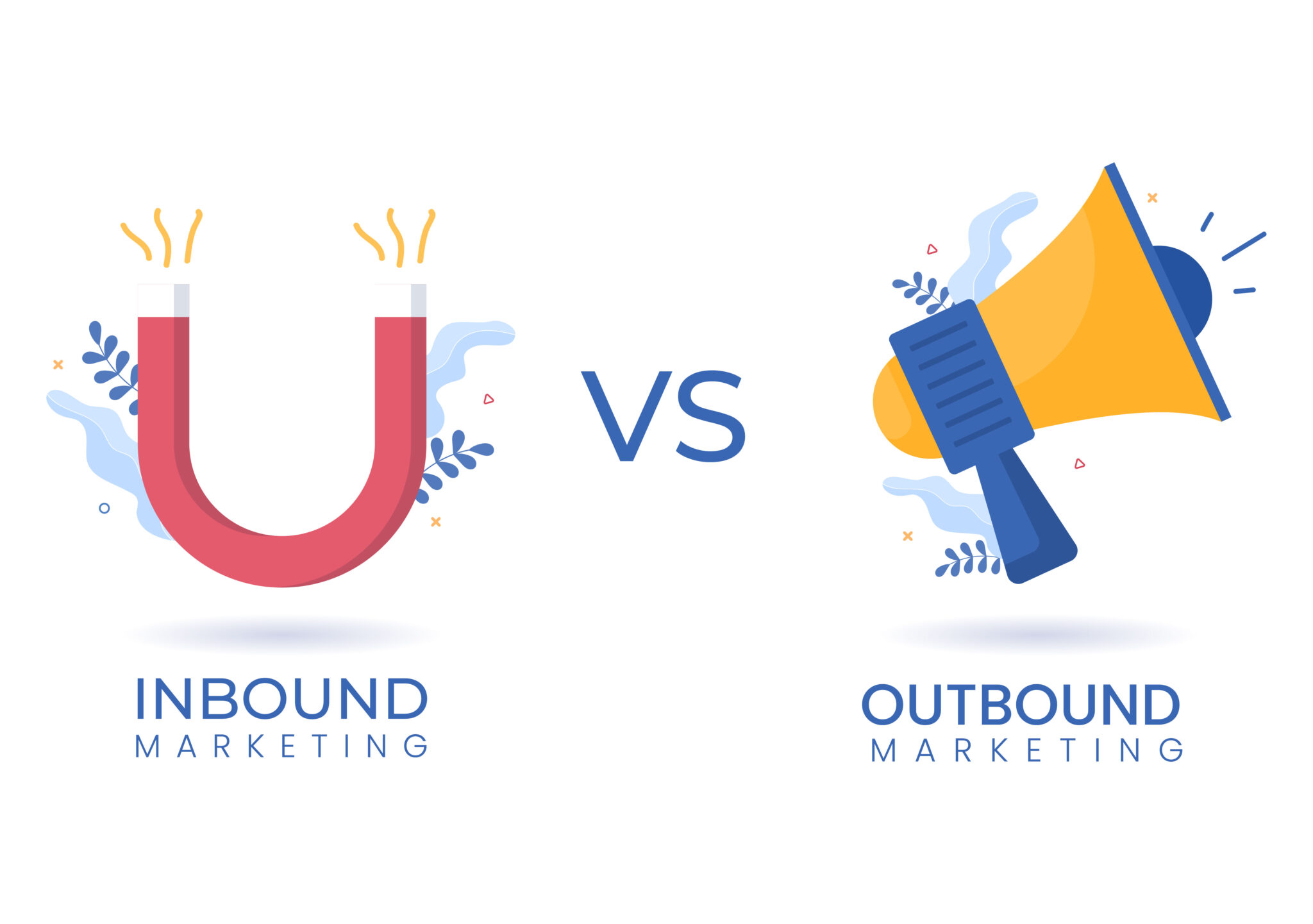How to Leverage Inbound and Outbound Marketing for your Sales Strategy?
The rapid rise of digital communication has changed marketing stakes in business-to-business (B2B) marketing. Whereas companies used to be most actively engaged in looking for potential customers, today it’s increasingly likely that customers will find potential suppliers on their own online.
A good inbound marketing sales strategy is a very effective catalyst for boosting the odds that your company will be found. Inbound marketing isn’t a replacement for your outbound marketing efforts. But, working together, inbound and outbound marketing can help companies win new customers.
What is an inbound/outbound marketing strategy?
Inbound and outbound marketing are two sides of the same coin. Both are important to achieve desired sales goals. But each requires a different approach to maximize effectiveness.
Outbound marketing strategy: definition and benefits

Outbound marketing is based on the traditional push marketing technique. The company pushes communication about its products or services to a target audience in the hope of finding new customers. To achieve this, outbound marketing uses various tactics including email campaigns, product presentations at trade fairs and shows, telephone or door-to-door canvassing, billboards, sponsored links, TV and radio ads, and more.
Outbound marketing offers both benefits and some potential shortcomings. This “push” strategy can be used to raise awareness of the brand on a large scale—or to target very specific segments of a market. But while outbound marketing can be a good way to develop leads and generate sales, companies that use outbound marketing exclusively risk overlooking other key sources of leads and prospects.
Today’s consumers tend to be very proactive and, given the easy, low-cost access they have to digital communication channels, they’re comfortable seeking information on their own. They’re more likely than ever before to begin their own search for product solutions when they’ve identified a need.
Inbound marketing strategy: definition and best practices

Getting buyers to come to you is what inbound marketing is about – it’s a “pull” sales strategy. Instead of reaching out to potential customers who might be interested in what they have to offer, inbound marketing involves making information about the company easy to find by those who already have a need and are ready to make a purchase.
So what tools do you need for an effective inbound sales strategy?
Content marketing, of course, with a good SEO campaign to support it and effective promotion on social media. Then a winning lead nurturing sales strategy can be implemented through a powerful marketing automation tool.
To leverage Inbound marketing, the following actions can be taken:
- The company implements a content strategy based on its marketing personas and their buying journeys.
- The company sets up an SEO campaign designed to help prospects find its content.
- The company offers a compelling ”Call to Action!” to help prospects stay informed of news or to download premium content.
- The company “feeds” its leads with adapted content. Note: in this context of lead nurturing, a marketing automation tool allows companies to save a lot of time and to target messaging more precisely.
Once the lead is “hot,” the salesperson contacts a prospect ready to buy, or the buyer requests a quote and meets the salesperson. To discover more on how to leverage these automation tools and what types of information to collect, read our blog about How to leverage Custom Information for a Successful Personalized Outreach.
What is the difference between Inbound and Outbound marketing?

To understand the differences between inbound and outbound marketing, here is a review of the key stages of these sales strategies.
The salesperson goes looking for the customer vs. the customer goes looking for the salesperson:
In outbound marketing, the salesperson canvasses and approaches potential customers. Conversely, in inbound marketing, the customer canvasses and then approaches the company or sales representative. So, why is inbound marketing so effective? Well, because:
- A prospect who reaches out on their own is in the buying phase and has already planned a budget.
- The sales cycle is faster.
- The conversion rate is much higher when the prospect contacts the sales representative.
- The salesperson can concentrate on the closing part of the business transaction.
The information is “forced” on the lead vs. the lead actively seeking information:
Ads and advertising have come to have somewhat negative connotations. To many, they are annoying. On the other hand, inbound marketing content is high-value-added information. The prospect is on a search for the information they find and takes pleasure in discovering and evaluating the content. Ultimately, they’re able to compare products and services based on their own objective criteria, rather than advertising pitches.
The customer relationship is imposed vs. the customer initiates the customer relationship:
In outbound marketing, the salesperson disturbs the prospect by attempting to make contact–often at the wrong time, and when the prospect may or may not have a need, or interest. There is little chance that the prospect will be interested in making a purchase. On the contrary, in inbound marketing, the customer contacts the sales representative on their own. The customer chooses the moment based on an immediate need and is more likely to make a buy decision.
The prospect gives their contact information to the sales representative, vs. the prospect asks to be contacted:
In outbound marketing, prospects will often provide their contact information to shorten the conversation: “Send me your presentation and I will contact you if I am interested.” In inbound marketing, on the other hand, the prospect shares their information upfront after they’ve already developed an interest in the product or service. That means a more qualified lead for the salesperson and a greater likelihood of a sale.
Combine Inbound and Outbound marketing in 4 steps.

1. Opt for the push-pull approach.
Outbound marketing spreads information to a large pool of potential customers (push), while attraction marketing attracts the attention of prospects interested in your field of expertise (pull). The two approaches support and amplify each other. The result? Potential clients have been attracted by an advertisement or are convinced of your expertise following their own research. Your blog posts confirm your know-how. All this, without them even having contacted one of your representatives! Reaching and attracting prospects, your outbound marketing campaign leads to your content, a star player in your inbound marketing.
2. Get the most out of your email marketing.
Did you know that 87% of B2B marketers consider email to be the best free and organic way to distribute information? So whether you want to send your newsletter to interested subscribers (attraction marketing) or distribute your electronic brochures (outbound marketing), take advantage of this platform!
To optimize the open rate of your email marketing tactics, it’s best to segment your mailings or at least personalize them according to your segments. By adjusting the text of your emails to your targets, you can more easily address their needs. Not to mention increasing the likelihood of building a relationship of trust with them.
3. Focus on branding
Your brand image is at the heart of the success of your sales strategy. This is where clarity and consistency play a key role. Imagine: a potential client arrives on your website and doesn’t understand the purpose of your services. Or the prospect notices that your voice keeps changing from one page to another. This confusion will probably not convince the prospect to do business with you!
4. Follow up and improve
You should be closely monitoring your outreach and attraction efforts to note where you perform best and where you may need to adjust. In the process, you’ll regularly take the pulse of your potential customers (what are they interested in? do they have new concerns?). To track your digital platforms, turn to Google Analytics and UTM (Urchin Tracking Module) metrics to get an accurate picture of users and their journeys.
For example: compare which download of your ebook is most effective: through your Google Ads (outbound marketing) or your blog post highlighting it (inbound marketing)? Some products or services might work better with one or the other approach. With this data in hand, you can optimize your campaigns in (almost) real-time! In short, it’s all about balance! Combined, inbound and outbound marketing increase the effectiveness of your sales strategy. They offer optimal solutions to your potential customers and make your organization shine.
Looking for more information on how to better reach and connect with your customer? Read more on our eCore blog or contact us.

By Bogdan Mojsic
Founder & CSO

0 Comments